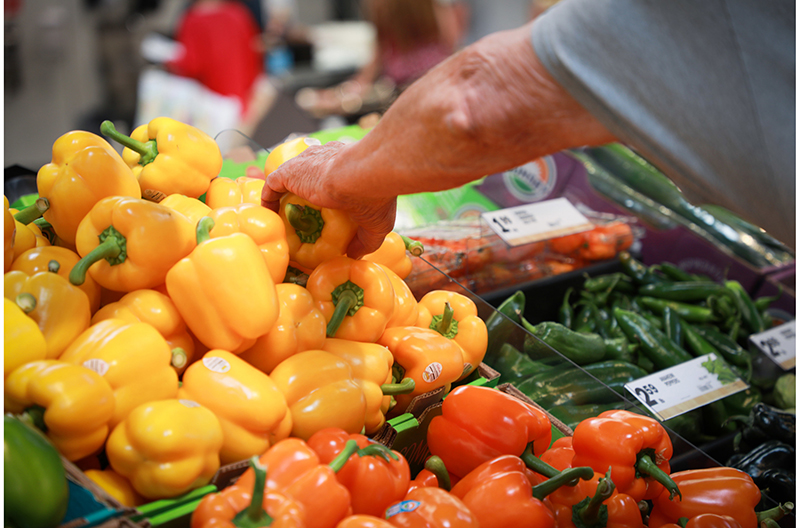IRI, 210 Analytics and IFPA continue to share the latest trends and analysis in fresh produce. Fresh produce prices were also up from last year, but a relatively low 5.3 percent level on a per-unit basis and 5.6 percent on a per-pound basis. This is far below the total store average.
The deceleration is driven by fruit, for which prices increased at a low 3.2 percent. Additionally, vegetable inflation dropped into the single digits at 7.7 percent year on year.
The four November 2022 weeks brought $61.1 billion in food and beverage sales – more than a typical month. November sales were up 10.4 percent versus year ago and 29.1 percent versus November 2019, the pre-pandemic normal. Perishables, including produce, seafood, meat, bakery and deli, had a below-average dollar performance that was related to below-average inflation. Center-store item sales increased a little more than 11 percent.
November fresh produce sales reached $5.2 billion, surpassing the record set the prior year by 4.2 percent. The dollar increase was driven by inflation; however, unit and volume declines versus November 2021 were relatively mild compared to those seen in other departments.
“This could be a signal that moderating prices are starting to strengthen demand,” said Jonna Parker, team lead fresh at IRI. “Fresh fruit, in particular, is starting to trend very close to year ago levels. November and December have the heavily holiday impact on sales, but these are positive signs nonetheless.”
Thanksgiving week was actually one of the smaller selling November weeks, with produce sales peaking the week ending Nov. 20. Gains versus year ago were consistent with pounds going positive versus 2021 in the second November week.
“Growth for fruit is slowing down due to moderating levels of inflation,” said Joe Watson, IFPA’s VP of retail, foodservice and wholesale. “As fruit is starting to trend very close to 2021 levels in volume, I fully expect to see that trend line starting to level out soon. Compared with 2019, both fresh fruit and vegetables are now trending about 21 percent above pre-pandemic levels.”
Thanksgiving buying patterns, such as canned green beans, cranberries and corn, in combination with the below-average rate of inflation for fresh produce meant a drop in the share of fresh fruit and vegetables (75.7 percent) versus the share represented by frozen (8.7 percent) and shelf-stable (15.6 percent). Prices for frozen fruit and vegetables increased 23.5 percent in 2022 versus 2021.
Fresh produce pound sales have trailed behind year ago levels since March 2021, but volume moved much closer to year ago levels in November. While down 1.3 percent, this is the best performance since the first quarter of 2021.
For more company news, visit iriworldwide.com.
For more produce news from The Shelby Report, click here.

